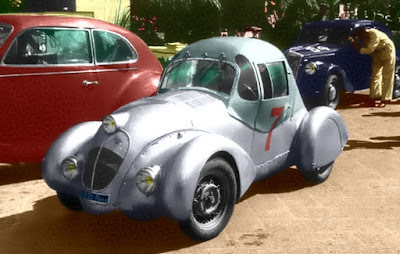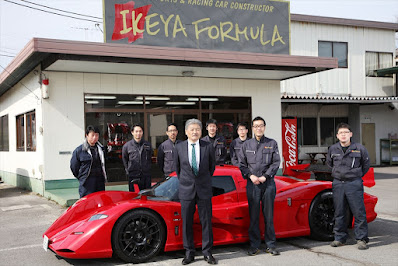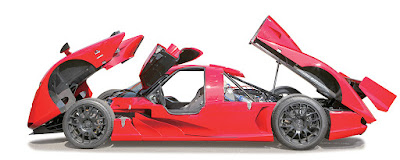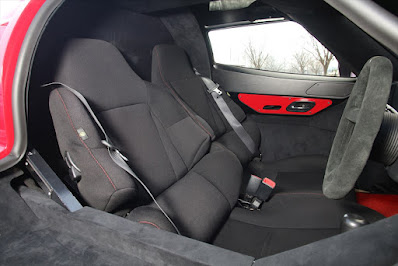Dream EV - The automotive world has always been filled with thrilling innovations, and Lotus continues to push boundaries with its latest creation. For decades, Lotus Car has been renowned for crafting lightweight, high-performance sports cars that capture the hearts of enthusiasts around the globe. Now, the iconic brand is stepping into the future with the Lotus Theory 1, an all-electric sports car that blends cutting-edge technology with the thrill of high-speed driving. This marks a significant chapter in the company's long history, as it ventures into the ever-evolving electric vehicle (EV) market.
 |
| The Theory 1, Lotus's latest concept EV, showcases the automaker's strong belief in the future of intelligent, lightweight sports cars. (Picture from: TheVerge) |
Lotus has never been a stranger to innovation. From the early days of Formula 1 racing to the production of street-legal performance cars, the company has always sought to balance speed with design excellence. The introduction of the Lotus Theory 1 is a testament to its ongoing commitment to evolution. This concept car showcases not only the brand’s engineering prowess but also its ambition to lead in the electric vehicle arena. More than just a high-speed marvel, the Theory 1 is designed to offer a driving experience like no other.
 |
| The Lotus Theory 1 measures 4,490 mm in length, 1,140 mm in height, and 2,000 mm in width, with a 2,650 mm wheelbase and a weight of under 1,600 kg, making it impressively light for an electric car. (Picture from: F1rstMotors) |
At first glance, the Theory 1’s exterior design stands out with its sharp, aggressive lines. The car’s resemblance to the iconic Lotus Esprit is unmistakable, yet it brings a modern flair that is futuristic and bold. The low-slung body, paired with boomerang-shaped headlights, creates a sleek, aerodynamic profile that enhances its performance capabilities. The attention to detail is evident, especially in the unique doors that mimic the dramatic bat-wing style, swinging up and out in a manner reminiscent of Koenigsegg's hypercars. The lightweight design, made from recycled carbon, composite, and polycarbonate materials, ensures the car remains agile on the road.
 |
| The Lotus Theory 1's low-slung body, combined with boomerang-shaped headlights, creates a sleek, aerodynamic profile that enhances performance, while its attention to detail is showcased in the dramatic bat-wing style doors. (Picture from: F1rstMotors) |
Stepping inside the Lotus Theory 1 reveals an equally impressive interior. The three-seat layout, with the driver positioned centrally, is a nod to classic supercar configurations like the McLaren F1 and Gordan Murray T.50. This driving position enhances the sense of control and engagement with the car, making the driving experience immersive. But it’s not just the seating that stands out. The Lotuswear system introduces advanced technology into the cabin, using haptic feedback and colorful lights to interact with both the driver and passengers. The steering wheel, for instance, vibrates to signal upcoming turns, making the driving experience more intuitive.
 |
| The Lotus Theory 1 is equipped with Level 4 autonomous driving capabilities, made possible by the integration of the Nvidia Drive platform. (Picture from: F1rstMotors) |
Beyond its eye-catching design and innovative features, the Lotus Theory 1 is a powerhouse of performance. Underneath the sleek exterior lies an electric powertrain that delivers an astounding 987 horsepower. This immense power allows the car to accelerate from 0 to 100 kilometers per hour in under 2.5 seconds, a feat that places it among the fastest electric vehicles on the market. Its top speed reaches an impressive 320 kilometers per hour, showcasing the balance between raw power and refined engineering. However, while the car's speed is a significant talking point, its range is more modest, offering up to 402 kilometers on a single charge, which may limit long-distance drives.
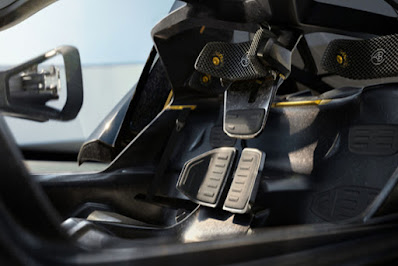 |
| Stepping inside the Lotus Theory 1 reveals an impressive three-seat layout with a central driver position, enhancing control and making the driving experience more immersive.. (Picture from: F1rstMotors) |
The technological advancements don’t stop there. The Lotus Theory 1 is equipped with Level 4 autonomous driving capabilities, made possible by the integration of the Nvidia Drive platform. This allows for semi-autonomous driving, where the car can handle many driving tasks independently. The inclusion of four Lidar sensors, HD cameras, and radar systems enables the vehicle to have a comprehensive 360-degree view of its surroundings, ensuring a safe and smooth driving experience. Even though this car can drive itself, Lotus has made sure that it still delivers the excitement and engagement that drivers crave.
 |
| Beneath the sleek exterior of the Lotus Theory 1, an electric powertrain produces 987 hp, enabling acceleration from 0 to 100 kilometers per hour in under 2.5 seconds and providing a range of up to 402 kilometers on a single charge, which may limit long-distance travel. (Picture from: F1rstMotors) |
Though mass production details remain unclear, the possibility of the Lotus Theory 1 becoming a production model is definitely on the horizon. Speculation suggests that it could be built at Geely's new factory in Wuhan, where other Lotus models like the Eletre and Emeya are produced. This would mark a significant step for Lotus as it expands its footprint in the electric vehicle market.
 The Lotus Theory 1 represents more than just a concept car. It symbolizes the brand’s commitment to embracing the future while staying true to its heritage of high-performance sports cars. With its innovative design, advanced technology, and exhilarating performance, the Theory 1 has the potential to shape the future of electric sports cars and redefine what it means to drive. *** [EKA | FROM VARIOUS SOURCES | LOTUSCAR | HAGERTY | F1RSTMOTORS | CARANDDRIVER | ROADANDTRACK | THEVERGE | ID.MOTOR1 ]
The Lotus Theory 1 represents more than just a concept car. It symbolizes the brand’s commitment to embracing the future while staying true to its heritage of high-performance sports cars. With its innovative design, advanced technology, and exhilarating performance, the Theory 1 has the potential to shape the future of electric sports cars and redefine what it means to drive. *** [EKA | FROM VARIOUS SOURCES | LOTUSCAR | HAGERTY | F1RSTMOTORS | CARANDDRIVER | ROADANDTRACK | THEVERGE | ID.MOTOR1 ]Note: This blog can be accessed via your smart phone


























